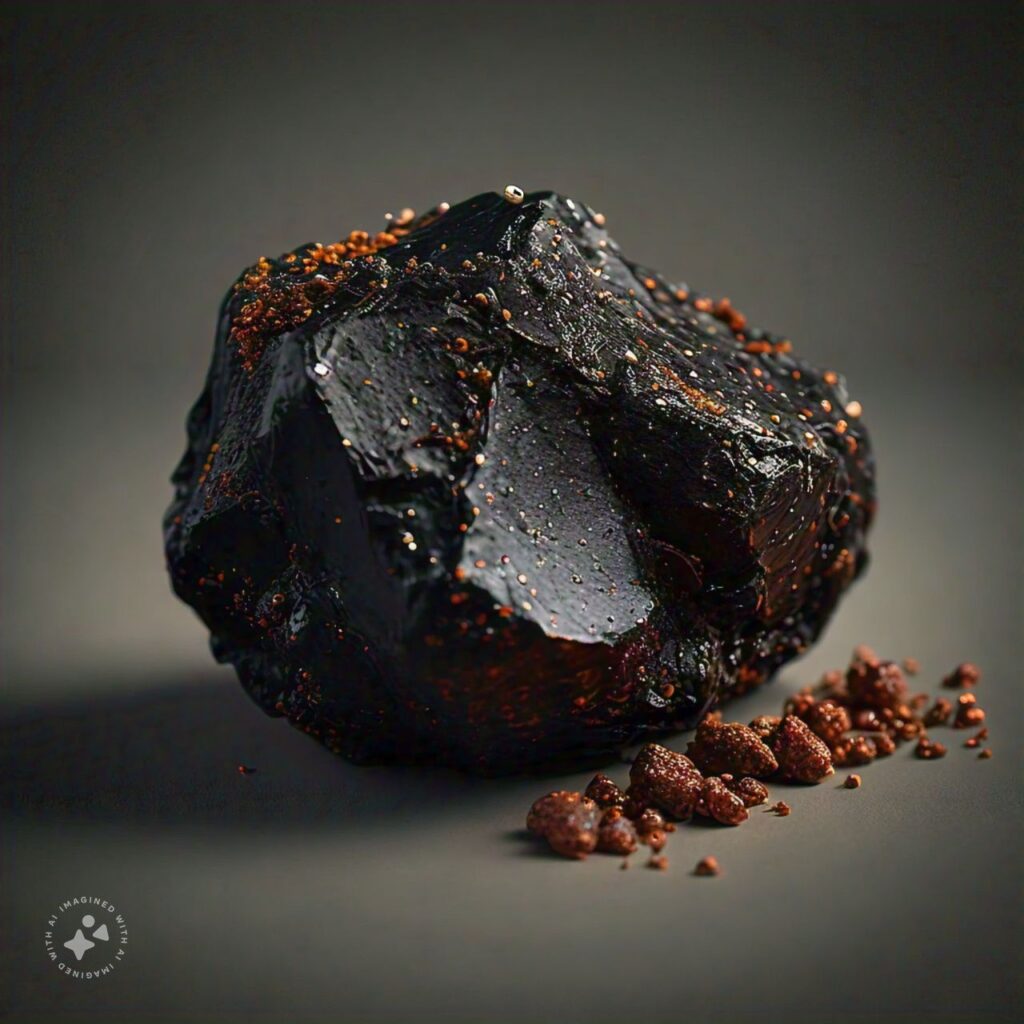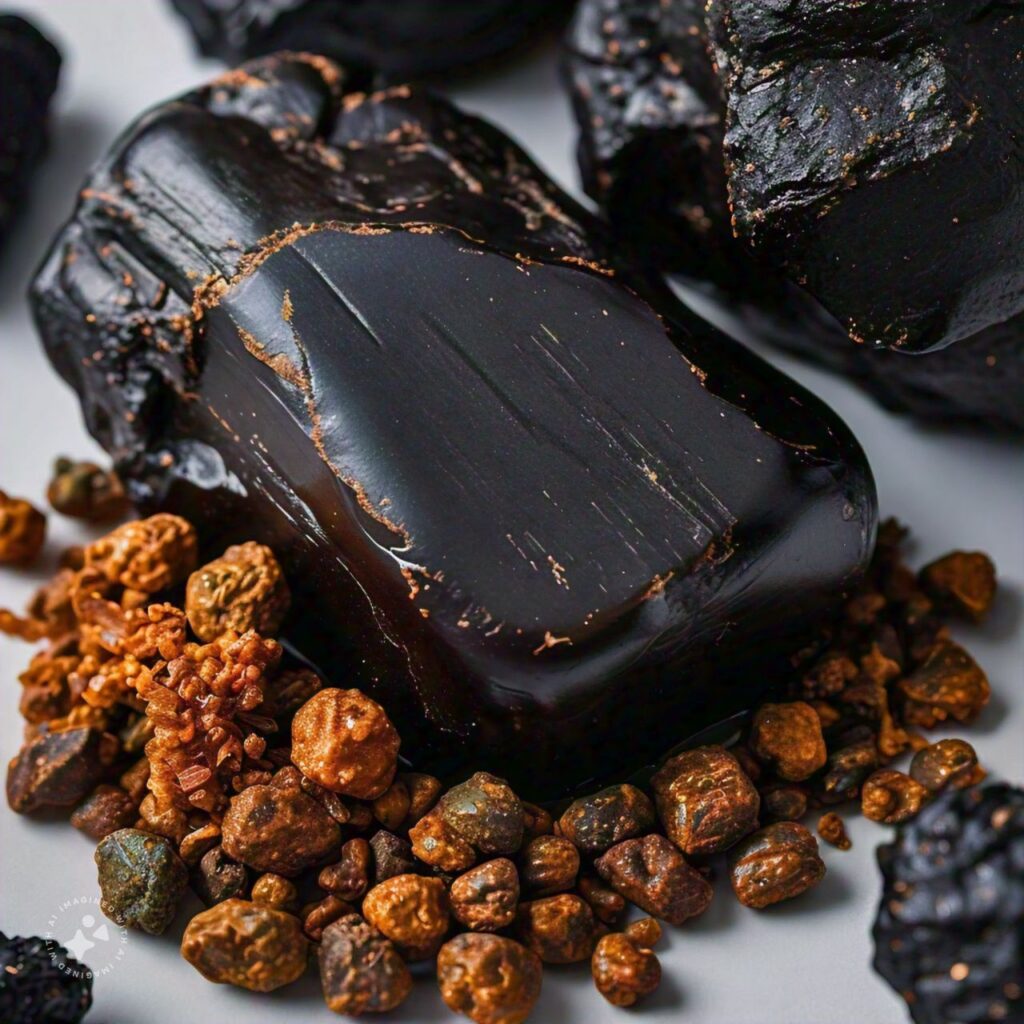Shilajit, an ancient well-known mineral, has been an important component of medical practices for ages. Found primarily in the Himalayan region, Himalayan shilajit is prized for its potent health benefits and rich mineral content. In This article, we’ll get to know the complex and highly laborious process of obtaining shilajeet from the Himalayan highlands, including the procedures required, problems encountered, and precautions taken to ensure its purity and efficacy.
The Origins of Shilajit in the Himalayas
It is a natural, tar-like substance that seeps out of rocks in high-altitude mountain ranges, particularly the Himalayas. Over centuries, the decomposition of plant material and microbial activity led to the formation of shilajeet. This complex process results in a substance rich in fulvic acid, minerals, and other bioactive compounds. The Himalayas’ unique environmental conditions—altitude, temperature, and biodiversity—contribute to its exceptional quality when sourced from this region.
Identifying Shilajit Deposits
Geological and Botanical Surveys
The first step in sourcing this natural supplement involves identifying potential deposits. Geological and botanical surveys are conducted to locate areas where it is likely to be found. Experts analyze the rock formations and surrounding vegetation, looking for specific signs that indicate the presence of shilajeet. These surveys often require extensive knowledge of the local terrain and ecosystem.
Traditional Knowledge
In many cases, traditional knowledge passed down through generations plays an important role in locating shilajit deposits. Indigenous communities living in the Himalayan region possess a deep understanding of the land and its resources. Their insights and experiences are invaluable in identifying and accessing its deposits.

Harvesting Shilajit
The Climb to High Altitudes
Harvesting shilajit is a physically demanding task that involves trekking to high-altitude regions, often above 10,000 feet. The journey to these remote locations can be arduous and dangerous, requiring skilled and experienced climbers. The thin air, harsh weather conditions, and rugged terrain add to the challenges faced by harvesters.
Extraction Techniques
Once the shilajeet deposits are located, the extraction process begins. It seeps out of rock crevices in a semi-solid, tar-like form. Harvesters use simple tools such as metal rods and scrapers to carefully collect the substance. The extraction process must be done with precision to avoid contamination and ensure the purity of it.
Ensuring Sustainability
Sustainability is a critical consideration in the harvesting of shilajit. Over-harvesting can deplete natural deposits and harm the fragile mountain ecosystem. Responsible harvesting practices are essential to maintain the balance of the environment. This includes rotating harvesting sites, limiting the quantity of its collection, and allowing sufficient time for natural replenishment.
Purification and Processing
Initial Cleaning
After harvesting, it undergoes an initial cleaning process to remove impurities such as dirt, rocks, and plant material. This is typically done using filtered water to wash the raw shilajeet. The cleaning process helps to ensure that the final product is free from contaminants.
Traditional Purification Methods
Traditional purification methods involve dissolving the it in water or a herbal decoction and filtering it multiple times. This process helps to remove soluble impurities while retaining the beneficial compounds. The purified form is then dried under controlled conditions to achieve the desired consistency.
Modern Processing Techniques
In addition to traditional methods, modern processing techniques are employed to further enhance the purity and quality of shilajit. Advanced filtration systems, including reverse osmosis and membrane filtration, are used to eliminate any remaining impurities. The final product undergoes rigorous testing to ensure it meets quality standards.
Quality Assurance and Testing
Laboratory Analysis
Quality assurance is a crucial aspect of the shilajit sourcing process. Samples of the purified shilajeet are sent to laboratories for comprehensive analysis. These tests assess the composition, purity, and potency of the shilajit, ensuring it contains the desired levels of fulvic acid and minerals.

Certification and Standards
To ensure the highest quality, reputable suppliers of shilajeet adhere to international standards and certifications. This includes Good Manufacturing Practices (GMP) and ISO certifications, which guarantee that it is processed under stringent quality control measures. Certification by third-party organizations provides consumers with confidence in the product’s authenticity and quality.
Challenges in Sourcing Shilajit
Environmental Challenges
The Himalayan region presents numerous environmental challenges that can impact the sourcing of shilajit. Harsh weather conditions, including extreme cold, heavy snowfall, and landslides, can make it difficult to access its deposits. The remote and rugged terrain further complicates the harvesting process.
Ethical and Legal Considerations
Ethical and legal considerations are also important in the sourcing of shilajeet. This includes ensuring fair compensation for local harvesters, respecting the rights and traditions of indigenous communities, and complying with local and international regulations regarding the harvesting and export of natural resources.
Can one obtain shilajit easily from The Himalayan mountains?
The method of obtaining this natural supplement from the Himalayan highlands is difficult and tough, requiring an excellent understanding of the local ecosystems, traditional wisdom, and modern scientific procedures. From finding deposits and harvesting raw materials to purifying and testing the finished product, each step is important for guaranteeing shilajit’s purity, potency, and sustainability. Despite the hurdles, cautious and conscientious shilajeet obtaining allows us to gain the wonderful health benefits of this ancient medicine while also protecting the Himalayan ecosystem’s thin ideal state.







